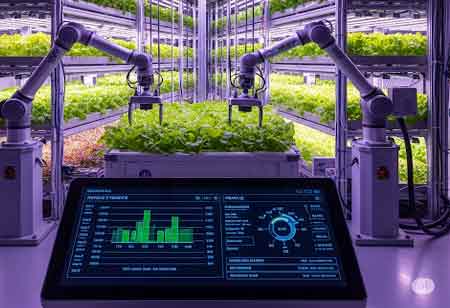Thank you for Subscribing to Agri Business Review Weekly Brief
How CRISPR is Redefining Latin America's Agricultural Future
Latin America is leveraging CRISPR and genetic engineering within indoor farming to tackle agricultural challenges, enhance crop resilience, and improve nutritional value, aiming for sustainable food systems amidst climate change.

By
Agri Business Review | Wednesday, July 23, 2025
Stay ahead of the industry with exclusive feature stories on the top companies, expert insights and the latest news delivered straight to your inbox. Subscribe today.
Fremont, CA: Latin America, a region grappling with diverse agricultural challenges ranging from climate change impacts to food security concerns in rapidly urbanizing areas, is increasingly seeking innovative solutions. The primary focus is on the convergence of advanced biotechnology, particularly CRISPR and genetic engineering, with the burgeoning field of indoor farming. This synergy offers unprecedented opportunities to enhance crop resilience and boost nutritional value, redefining food production across the continent.
CRISPR and Genetic Engineering: Precision Tools for Crop Improvement
CRISPR and other genetic engineering techniques have revolutionized plant breeding by providing precision and speed in modifying crop genomes. These tools allow scientists to target specific genes, accelerate breeding cycles, and address complex traits simultaneously. These benefits are particularly beneficial in indoor farming, where environmental factors are meticulously controlled. Importantly, they can significantly reduce the time required to develop new crop varieties with desired characteristics, offering a promising future for agriculture.
Advancing Crop Resilience in Controlled Environments
Climate change significantly threatens agricultural productivity in Latin America, with increased drought, extreme temperatures, and new pest and disease outbreaks. However, the global community is coming together to address these challenges. Collaborating with researchers and professionals from Honduras, Guatemala, Colombia, Brazil, and Argentina, as well as CRISPR and genetic engineering, can help enhance indoor farming systems' crop resilience. Disease and pest resistance are shared focuses of our research. CRISPR is used to develop gene-edited, disease-resistant bananas, crops resistant to prevalent diseases, and pest-resistant GM sugarcane. Modifying genes can enhance abiotic stress tolerance to improve nutrient use efficiency, temperature and stress tolerance, and salt tolerance. These technologies, developed through our collective efforts, make crops "climate-smart" and secure yields in regions with saline water sources or soil issues.
Boosting Nutritional Value for Health and Food Security
CRISPR and genetic engineering in indoor farming can biofortify crops, addressing micronutrient deficiencies not just in Latin American communities but globally. This includes increased vitamin content, enhanced mineral absorption, improved protein quality, reduced antinutrients, and extended shelf life and waste. Global efforts include Vitamin D-enriched tomatoes, while CRISPR is used to develop non-browning fruits like avocados and bananas, reducing post-harvest losses and improving food availability for all.
The fusion of CRISPR and genetic engineering with indoor farming in Latin America represents a transformative frontier in agriculture. By precisely enhancing crop resilience against prevalent threats and significantly boosting nutritional value, these technologies are revolutionizing our approach to building more sustainable, secure, and nutritious food systems for the continent's diverse populations. As regulatory landscapes evolve and investments grow, Latin America is poised to become a leader in leveraging these cutting-edge biotechnologies to redefine the future of food production.





